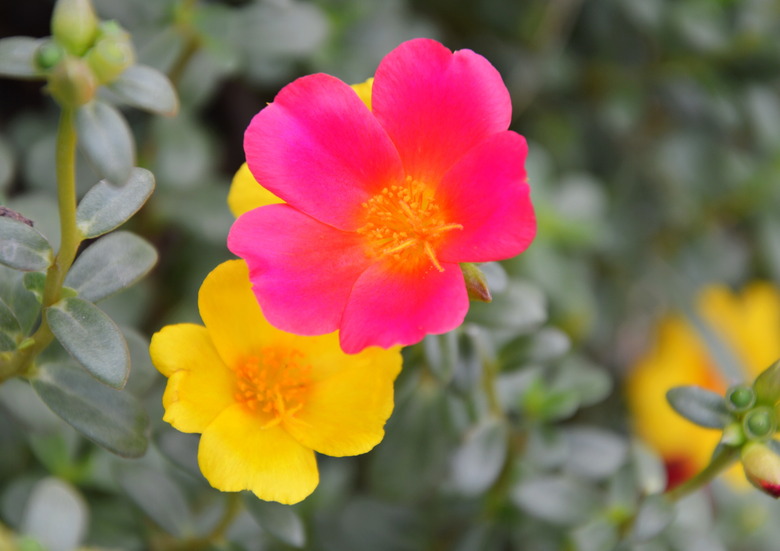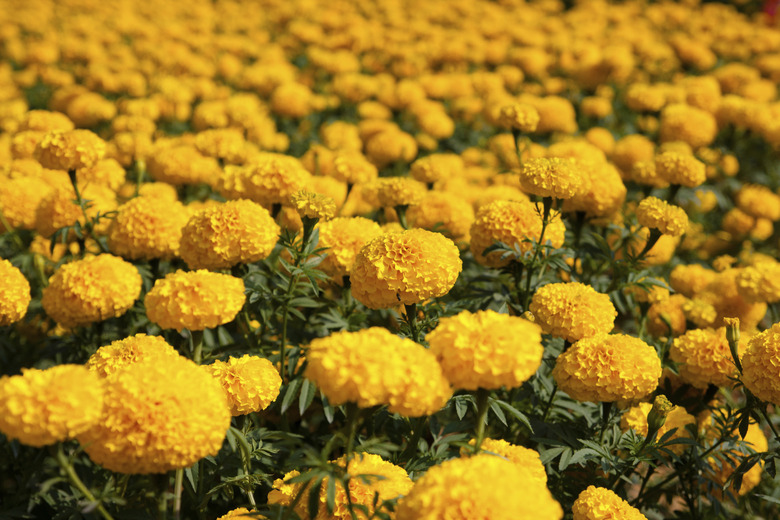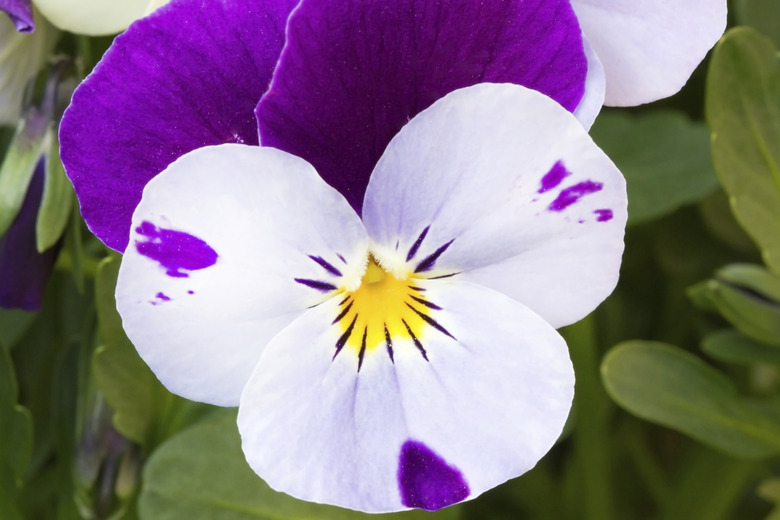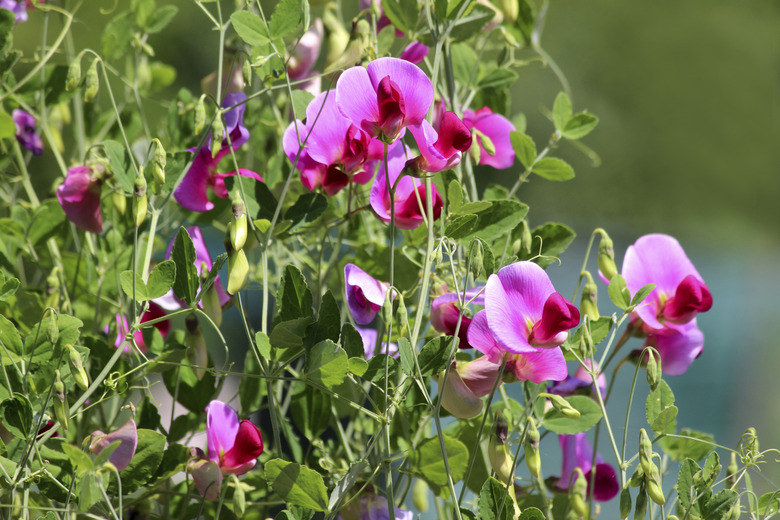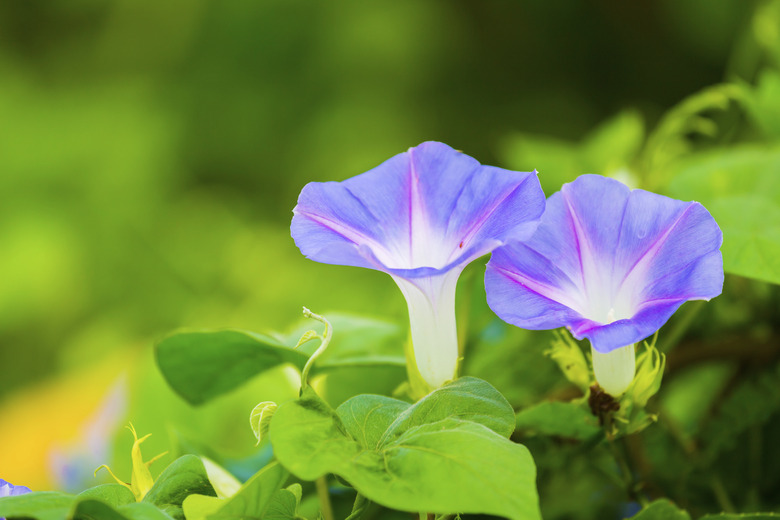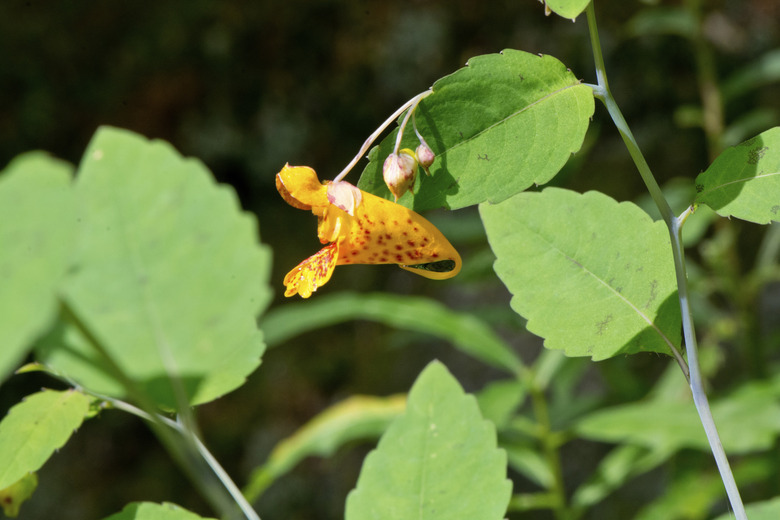List Of Hardy Annual Flowers
Gardeners welcome spring with the planting and nurturing of annual flowers. Depending on the variety and hardiness of the plants, that "spring" could extend well into fall. Gardeners living in warmer parts of the country, particularly in the American South, sometimes encourage certain hardy annuals to bloom throughout the winter.
Moss Rose
Moss Rose
Moss rose (Portulaca grandiflora) is an annual that blooms from June until frost. The flowers, up to an inch in diameter, come in red, rose, orange, yellow and white and only open on sunny days. The petals are ruffled and sit on short stems. On heavy blooming days the flowers appear to almost cover the medium green foliage. Often used for ground cover, moss rose grows up to 9 inches tall with a spread of up to a foot. They often self-seed. This plant is a succulent which tolerates drought and dry soils and needs full sun.
Marigold
Marigold
The marigold (Tagetes erecta) is a low-maintenance flower that usually blooms from about June until frost. The plant is most often called the African marigold, despite being a native of Mexico and Central America. Other names include the Aztec marigold, American marigold and big marigold. The low maintenance plant is tolerant of clay soils and grows up to 4 feet high with a spread of up to 2 feet. Flowers are yellow, orange and off-white and measure up to 4 inches in diameter. Marigolds love full sun and are not affected by high heat. The plant is often used in containers and to frame flower beds.
Horned Violets
Horned Violets
Horned violets, or pansies (Viola cornuta), perennials in U.S. Department of Agriculture plant hardiness zones 6 to 11, have flat face-like flowers that come in blue, violet and lavender, often combined with yellow. Foliage is a medium to dark green, with a spread of up to a foot and a height up to 9 inches. Though technically perennials, in many parts of the country they are treated as annuals. In the South, pansies planted in the fall flower throughout the winter and into early spring. As annuals, they are often started indoors and then moved outdoors in the spring where they bloom from about April to June. Violas prefer consistently moist but well-drained, organically rich soils. While tolerant of cool weather and liking full sun, the heat of summer usually kills off the plants. A favorite for window boxes, containers and flower beds, horned violets also attract butterflies.
Sweet Pea
Sweet Pea
The sweet pea (Lathyrus odoratus) is a cool weather annual that can bloom through the winter in areas like the American South. Throughout most of the country, blooming is typically from May through July. Sweet pea is a vine that will climb up to 8 feet if given the opportunity. Without support it grows in a bushy mound measuring up to 2.5 feet tall. Flowers come in several colors, excluding yellow, and are fragrant. Sweet peas like full sun, and are often used on trellises or pergolas. In hot climates, some shade is welcome. Sweet peas prefer organically rich, moderately moist soil that drains well. Cooler soils work best.
Warning
The fruit of the sweet pea is poisonous to humans and should not be ingested.
Morning Glory
Morning Glory
A native of Mexico and Central America, the morning glory (Ipomoea purpurea) loves warm weather and full sun. Soils that are consistently moist and that drain well are preferred. The purple flowers bloom from June to October, but only stay open from morning until late afternoon. Related cultivars have flowers in red, pink, magenta and white. This warm weather annual vine can grow up to 10 feet tall in a single season, with a spread of up to 6 feet. It is often used as cover for fences or trellises. Morning glories are a favorite of butterflies and hummingbirds.
Jewelweed
Jewelweed
Native to northern parts of the United States, jewelweed (Impatiens capensis) blooms from June through September. Also called spotted touch-me-nots, the flowers are orange or orange yellow with reddish brown spots. A fast grower, jewelweed can reach 5 feet in height with a spread of up to 2.5 feet. The "touch-me-not" name refers to the fruits, which when touched split open to disperse the seeds. The "jewelweed" reference refers to how water droplets bead up on the blue-green leaves. Jewelweed does best in part to full shade and in medium to wet soil. In the wild they are often found alongside ponds and streams.
Warning
In backyards, particularly if the climate is perpetually cool and damp, jewelweed can become aggressive because of its self-seeding ability. Though it is an annual, the hair-trigger seed pods ensure a constant source of new plants. Left on their own, jewelweed may start forming colonies, just as they do in the wild.
